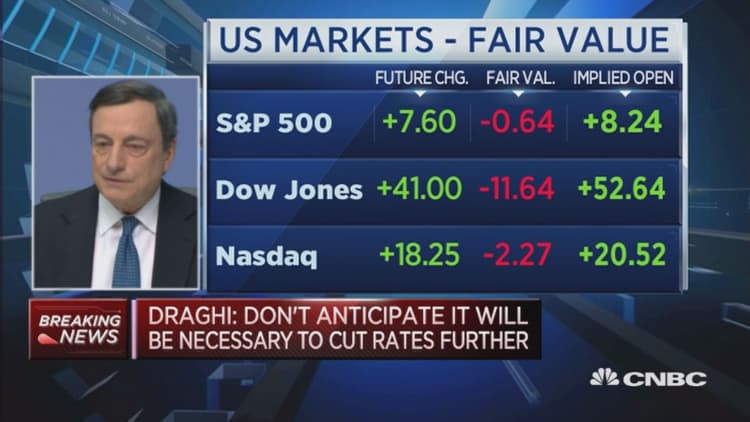After a grim winter frost, Wall Street has mostly warmed up as markets have rebounded. Investment-grade and high-yield bond offerings are flowing again.
But collateralized loan obligations, or CLOs, remain frozen after the void of volatility. Should CLO issuance remain scarce in 2016, it could reverberate across lending markets as loans will become more difficult to place and liquidity will tighten elsewhere on Wall Street.
Banks are slashing expectations for issuance and tightening in the market is reminiscent of the plummet in CLO deals that coincided with the onset of the global financial crisis. Yet, many experts are maintaining a stiff upper lip in the face of harsh data, especially as other asset classes have bounced back from a plunge to begin 2016.
"It's down drastically, issuance has been very light," said Bjarni Torfason, vice president of research at Deutsche Bank. "We are expecting the pace to pick up."
It took until late January for the first CLO deal to get done. Roughly $4 billion in CLOs have priced to date in 2016 (which counts this week's issuance), compared to nearly $16.9 billion for the week ended March 4, 2015, JPMorgan data show.

Unless the CLO market begins to thaw, the investing slowdown could begin to spread. The little-used financial products became widely popular in the years leading up to the financial crisis, but beginning in 2008 suffered a four-year lull as investors who were burned by losses steered clear of CLO deals. Issuance rebounded beginning in 2011, and shot to all-time highs in 2015 before again reversing into a relative decline.
Already, Wall Street is factoring in big drops in CLO issuance and slashing expectations for 2016 outlooks.
Read MoreOil slide fallout stifles U.S. CLO market
"Volatility has put a wrench in CLO origination," JPMorgan wrote in a recent market summary.
The bank cut its expectations for CLO issuance for 2016 roughly 40 percent to $35 billion to $45 billion, which still reflects the expectation that more offerings will come to market and be sold than have been so far this year.
Bank of America has similarly slashed its expectations for CLO issuance in 2016. Last year's tally exceeded $90 billion.
Part of the CLO market swoon can be traced back to energy, metals and mining companies' earnings decline that coupled with falling commodity prices.
The average CLO commits 5 to 7 percent of its investments to debt across these sectors.

But energy exposure is not uniform.
"We estimate that 18 post-crisis U.S. CLOs have a combined energy and metals and mining exposure over 15 percent," JPMorgan analysts wrote earlier this year.
Scant silver linings are to be found for the CLO marketplace. However, the scaling back of expectations that the Fed will raise rates as much as anticipated at the beginning of the year may bode well for the interest-sensitive products, and prolonged discounted money could help pry the pipeline open in the near term.
At the same time, the asset class is fighting off negative ratings from analysts. Downgrades of loans held in CLOs could pick up over the course of 2016, should energy companies continue to default at an accelerated pace.
Read More
In a Wednesday note, S&P analysts wrote that negative ratings actions for speculative-grade CLO investments reached their highest level since 2009, with much of the downgrades being experienced among energy and mining companies.
"We expect more downgrades throughout the year," said another industry source, who asked to not be identified.






